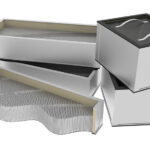The printing world has evolved dramatically with technological advancements. Direct To Film (DTF) printing is a revolutionary method offering versatility and quality in apparel and product decoration. However, with great innovation comes the responsibility of ensuring a safe and sustainable environment, which is where the significance of DTF fume extraction comes into play. In this comprehensive guide, we’ll delve deep into the essentials of fume extraction in DTF printing, understanding its criticality, exploring the types of systems available, and offering insights on best practices for implementation.
DTF Printing and Fume Extraction: A Crucial Pairing
DTF printing is a method where designs are printed onto a unique film and transferred onto fabric and other surfaces. This process, while efficient, involves using inks and chemicals that can release harmful fumes into the environment. Here, fume extraction isn’t just an added feature; it’s necessary for the operators’ health and safety and the environment’s protection.
The Necessity of Direct To Film Fume Extraction
Protecting Health and the Environment
Continuous exposure to the fumes from DTF printing can lead to serious health issues, including respiratory problems and skin irritation. Moreover, these emissions can contribute to environmental pollution. Fume extraction systems are designed to capture these airborne contaminants at the source, ensuring a safer workspace and minimizing ecological impact.
Types of Fume Extraction Systems
Finding the Right Fit
Several types of fume extraction systems can be employed in DTF printing environments:
- Local Exhaust Ventilation (LEV): These systems capture fumes at or near the source and exhaust them outside.
- Downdraft Tables: Ideal for smaller operations, these tables pull fumes downward, filtering and cleaning the air before recirculation.
- Ambient Air Cleaners: These systems clean the air within the workspace, suitable for larger areas where point-of-source capture is impractical.
- Custom Solutions: Depending on a printing operation’s specific needs and layout, a tailored solution combining various elements might be the best approach. For assistance with this option, contact Filtrabox for a free consultation.
Critical Components of Effective Fume Extraction
Ensuring Efficiency and Safety
When selecting a direct-to-film fume extraction system, several critical components need consideration:
- Capture Efficiency: The system should effectively capture fumes without hindering printing.
- Filtration Technology: High-quality filters are crucial for trapping harmful particles and releasing clean air.
- Airflow and Ventilation Requirements: Proper ventilation is critical to preventing the accumulation of toxic fumes.
- Maintenance and Upkeep: Regular checks and filter changes are essential for efficiency and safety.
Best Practices for Implementing Fume Extraction in DTF Printing
Strategies for a Safe and Compliant Operation
Implementing an effective fume extraction system involves more than just installation. It requires understanding your needs, carefully selecting the right system, and ongoing maintenance. Regular training for staff on the proper use and maintenance of the system is also crucial to ensure safety and compliance.
Future Trends in Direct To Film Fume Extraction and DTF Printing
Evolving Technology and Standards
As technology advances, so do the methods for capturing and filtering harmful emissions. Staying abreast of these developments is crucial for maintaining a safe and compliant operation. Moreover, as environmental and safety regulations become more stringent, understanding and anticipating these changes will help ensure your operation remains ahead of the curve.
Are you thinking of starting a DTF-related business?
DTF (direct-to-film) printing is revolutionizing how we personalize and brand various items. This versatile printing technology offers high-quality, durable prints on multiple materials, making it a popular choice for personal and commercial use. Here’s how DTF printing is used on various products:
T-Shirts
One of the most popular applications of DTF printing is on t-shirts. This method allows for vibrant, full-color designs with a soft-to-the-touch feel. Unlike traditional printing methods, DTF prints are durable, flexible, and don’t crack easily, making them ideal for t-shirts that undergo frequent washing and wear.
Pockets on Hoodies or Shirts
DTF printing isn’t limited to large areas; it’s precise enough for small, detailed work like embellishing the pockets on hoodies or shirts. This can add a unique, customized touch to standard garments, making them stand out with distinct designs or branding.
Hats
Hats, including caps and beanies, can also be adorned with DTF prints. Whether it’s a logo, an artistic design, or a catchy phrase, DTF can handle the curve and fabric of hats, providing a lasting and eye-catching look.
Printed Tags
Moving away from traditional sewn-in labels, DTF printing allows for the creation of printed tags inside garments. This method can provide detailed care instructions, branding, or size information directly on the fabric.
Shorts/Pants
Unlike t-shirts, shorts and pants can feature DTF prints to add personality or branding. The flexibility and durability of DTF prints mean that even areas that bend and stretch a lot, like knees and thighs, can showcase vivid designs without fear of cracking or fading.
Bags
DTF printing can turn ordinary bags into personalized accessories or promotional items, from canvas totes to polyester backpacks. The ability to print intricate designs and sharp text means that even complex logos or images will look clear and professional.
Flags/Banners
DTF printing extends to decorative and promotional items like flags and banners. The technology can produce bright, fade-resistant colors that withstand outdoor conditions, making it an excellent choice for indoor and outdoor signage.
Koozies
DTF printing can add a fun twist to koozies — those foam or fabric sleeves for beverage cans and bottles. With DTF, customizing koozies for events, gifts, or promotional items is easy, offering a high-quality finish that enhances the item’s look and feel.
In summary, DTF printing is a versatile technology that opens up a world of possibilities for customizing and branding various products. Its ability to print detailed, durable designs on multiple materials makes it a preferred choice for individuals and businesses looking to create unique, high-quality items. Whether for fashion, promotion, or personal expression, DTF printing is reshaping the landscape of printed products.
A Commitment to Safety and Sustainability
Understanding and implementing effective fume extraction in DTF printing is not just about compliance; it’s about demonstrating a commitment to the safety of your workers and the environment. By investing in suitable systems and best practices, you ensure that your operation meets current standards and is prepared for the future of printing technology.
References and Further Reading
To continue your journey in understanding fume extraction and staying informed about the latest in DTF printing, we encourage you to explore various resources. Industry journals, safety regulations, and manufacturer guides are excellent starting points for deepening your knowledge and keeping your operation at the forefront of safety and efficiency.
In embracing the responsibilities of innovative DTF printing, we find a path forward that prioritizes human health, environmental stewardship, and the pursuit of excellence in the printing industry. Together, let’s commit to a future where safety and quality go hand in hand. Have questions or need help selecting the perfect fume extraction system for your company or small business? Contact us today, and one of our fume extraction experts will assist you.








Recent Comments